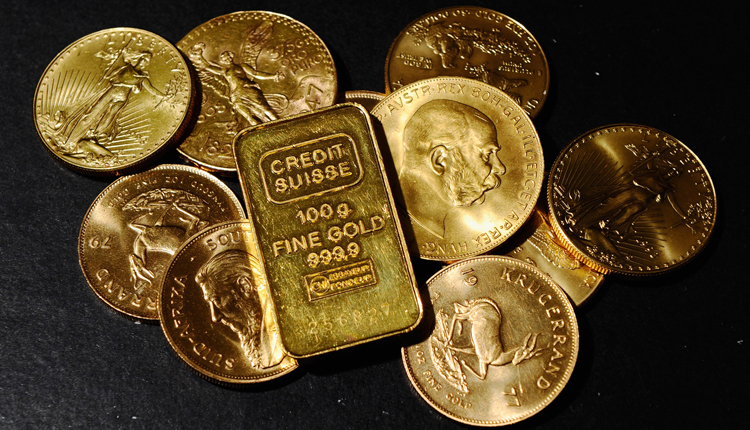Gold and silver prices slid to seven-month lows on Friday as the dollar rose to a two-week peak, buoyed by safe-haven purchases made in an ongoing U.S.-China tariff trade war.
Demand for the precious metals also waned on expectations of higher U.S. interest rates.
Spot gold lost 0.43 percent at $1,241.38 per ounce, after earlier falling to $1,236.58, its lowest since Dec. 12. U.S. gold futures for August delivery settled down $5.40 at $1,241.20. Gold prices are down about 9 percent since mid-April. Bullion is heading for a 1 percent weekly decline.
Silver fell 0.66 percent at $15.80, earlier hitting $15.67, its lowest since Dec. 13. The white metal is heading for a 1.2 percent weekly drop.
The U.S. dollar was little changed after peaking at a two-week high on Friday against a basket of currencies after data showing a record Chinese trade surplus, which may add fuel to U.S.-China trade tensions, spurred more investors to pile into the safety of the greenback. A rising U.S. currency makes dollar-denominated gold more expensive for holders of other currencies, which potentially weighs on demand.
“We (also) have increased expectations of Fed rate increases,” said Rob Haworth, senior investment strategist for U.S. Bank Wealth Management.
The Fed’s semi-annual report to Congress on Friday pointed to “solid” U.S. economic growth during the first half of the year, and reiterated that the U.S. central bank expected to continue to raise interest rates gradually.
Higher interest rates make gold more expensive to own since bullion does not earn any interest or dividends, and costs money to store and insure.
Speculators recently cut their net long position in COMEX gold to the weakest position since January 2016. “Bullish speculation is now at a new low. We are reaching a point where we may be pausing here,” Haworth added.
Holdings for the largest gold-backed exchange-traded-fund, New York’s SPDR Gold Trust, have fallen more than 8 percent since late April to below 26 million ounces.
Platinum lost 1.73 percent at $824.50 and palladium dropped 1.33 percent at $936.90. Both were headed for a nearly 2 percent weekly decline.
“The global trade dispute is threatening to disrupt auto sales, placing a question mark over platinum and palladium demand,” ANZ analysts said in a note. “While auto sales numbers suggest steady demand growth for palladium, expect a moderate decline in auto catalyst demand for platinum this year.”
More platinum than palladium is used in diesel engines, whose sales have fallen since Volkswagen was found in 2015 to have cheated in emissions tests.
Source: Reuters



